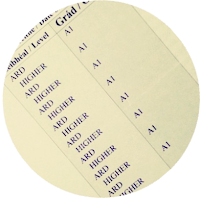The village shops in Sara Baume’s novel contain a “surplus of useless clutter”.
Write a personal essay in which you reflect on the “useless clutter” that is a feature of aspects of our lives.
This is an essay from a current Leaving Cert student published under our #625Lab section that reviews of strengths and weaknesses of a student’s essay rather than a model essay. See the corrections and comments. If you want H1 personal essays, read these:
Personal Essay Sample Answer: Uncertainty (Sexuality)
Personal Essay Sample Answer: Uncertainty (Social Issues)
Personal Essay Sample Answer: Everyday Treadmill and Gilded Promises of Life
Personal Essay Sample Answer: Not all problems are physical
Personal Essay Sample Answer: A place you consider beautiful
Personal Essay Sample Answer: Uncertainty (Social Issues)
Personal Essay Sample Answer: Everyday Treadmill and Gilded Promises of Life
Personal Essay Sample Answer: Not all problems are physical
Personal Essay Sample Answer: A place you consider beautiful
You may also like:
Complete Guide to Leaving Cert English (€)
It’s pretty clear that the author of this is a bright young person. This essay has so much potential, but this girl’s arguments die soon after they are born. Let’s see how to avoid that.
I hate clutter. Every speck of dust that meets my eyes is wiped away in a flash. I was quite minimalistic as a child. I would much rather go play an imaginary house game in my garden, than play with my collection of ‘My Littlest Pet Shop’ that my mum bought me. I did not find it difficult to say goodbye to my old toys. I use to happily give my old toys away to my mums’ primary school. As a child, many know the ‘crazy cat cluttered lady’ from Television shows, but one was in my family, and I think this is where my hatred of clutter begun. (Beautiful short sentences at the start – and then the author moves on to this long one. Long sentences nearly always have mistakes. Read about why this sentence is messed up here.)
Many movies, television shows and different sources of media have stereotypes that they like to play with over and over again. One of them that has appeared is the ‘cluttered cat lady’ character.

One of the most famous cat lady characters is from ‘The Simpsons’, Dr. Eleanor Abernathy MD, JD. She is a 40 year old mentally-ill woman who always surrounds herself with a large number of cats. She usually screams gibberish and throws her cats at passing people on the street.
Eleanor Abernathy is most known in the episode, when Lisa and Marge enter her house to find their dog which chased one of her cats. Inside the house, they find out that Eleanor Abernathy is a hoarder, keeping endless amounts of useless clutter. They decided to help her out and clean out her house. (Do you see a clear logic behind her division of paragraphs? I don’t – and it’s frustrating as a reader. We come away with the feeling that we didn’t understand the message of the paragraph.)
People often assume these cat ladies are single, mentally ill, and have problems relating to people, substituting their cats for personal relationships. Most people do not have to think twice about the ‘crazy cat lady’ interfering with their own lives, and often do not realise such a character exists out outside television. However, I have witnessed the extent of these ‘cluttered cat ladies’. Growing up with my Aunt Ann has impacted on my life and has made me realise the effects that possessing useless junk can have on a person. (Why is the Simpsons character in this essay? What lesson does the author want us to learn by observing her? What about her aunt – was it her addiction to accumulating clutter that put the author off? In what way did it change her life? The author alluded to all of these things in her essay – but she just need to be more direct and clear about it.)
I did not understand the reasoning behind the character as a child, but I knew, I did not want to be associated with the town’s ‘cluttered cat lady’. My childhood memories of my Aunt Ann are filled with echoes of random vocal outbursts and our family visits on Sunday evenings to her cramped home. Her home was a reflection of how her useless clutter affected her everyday life.
The moisture diffused through the air, and condensed on her furniture is a smell I can never forget. I could not even successfully open a window, without bashing into her stacks of untouched books. She would get suspicious of anyone touching these books. I would always tell her that I had not touched her books, that if I had, my fingerprints would be imprinted through the layers of thick dust that covered them. Portraits of high class Victorians, whom she did not know, still paint unpleasant images of the cramped house in my mind.
My Aunt Ann hoarded everything and anything you could possibly imagine. It was all a bunch of useless clutter. Numerous notebooks sat in piles on her kitchen table, her “shopping lists for future tea parties”. Ten sets of coloured china sat in her cabinet, waiting to be used for a special event, which never happened.
In the four bedroomed bungalow, she managed to fill every corner with boxes, spilling over with various with untouched items. I was never given permission to enter any of the four bedrooms. I never questioned why, but it was always a quick shake of the head “no”. (How does that make the author feel? What did the author conclude? Had the author included these things, this would have been a great essay, but at the moment it’s a raw recount of her memories.)
On days she decided to open her curtains, piles of clothes scattered on the floor could be seen from outside the window. However, she seemed to always wear the same pink jumper, dark denim jeans and mustard Chelsea boots. (And what is the conclusion? That while she had all this stuff, she never used it? The author should really articulate it rather than leaving the readers guessing.)
My hatred of cats originates from her dozen cats that prowled around her house. Her furniture was destroyed. The sofas’ cushion was moulded into the shape of a cat. The kitchen table looked like it had never seen sandpaper before and the legs of the chairs had countless scratch marks engraved on them. My Aunt hoarded cats of all kinds. She was an animal hoarder, and these animals became purposeless outcomes. Whether it was a stray out of the gutters of a dark alleyway or her neighbours “malnourished cat”, they became her cats. Along with the hoarding of animals, came the hoarding of useless animal accessories. Every Sunday evening, she would show me the six new collars she had bought each of her cats. I would always politely respond, letting her know I could not wait to see the cats actually wearing them. Sadly, these cats were pointless innocent prisoners of well-intended but misguided love.
It was not until last year, when my Aunt Ann moved into my home, that I discovered the extent of useless clutter and how it can affect one’s life. Useless clutter can affect all aspects of life including mental and physical health, and one’s financial status and social life. I am not going to lie, for the sixth months that she lived with my family, it was the most stressful period we have been through together. I would come home from school and find another bag filled with newly bought items. She spent all of her money on pointless items and materials, instead of saving up for her new house. She could not control her obsession. Our home soon became her home. Every corner of my house was occupied by her boxes of useless clutter.
I do have one confession, however. (Not a very smooth transition!) There is one drawer in my life which others have identified as useless clutter. It is my highly disorganised music drawer. There are scattered sheets and books of my first violin pieces that I refuse to throw out. I do not even play the violin, anymore. I cannot bring myself to throw them out because they hold a sentimental value. I am scared to throw away these sheets, as it may distance my memories of playing violin my first violin sheets, where my love for music begun. (The author is doing something great here: developing the other side of the argument. “Can there be situations where useless clutter isn’t bad?” However, she fails to frame it properly.)
These music sheets, trigger new trains of thought on clutter. Is an item really useless when it holds a sentimental value? Someone’s childhood bracelet may hold all their childhood memories in the beads. Someone else who passes it on the street, may see it as litter. (A comma separating the subject and predicate – that’s a pretty crude punctuation mistake, don’t do it.) My pile of music sheets may have no purpose, and are useless in some people’s eyes, but in mine they hold a sentimental value. (This should be two separate sentences. If it had been, the author would have avoided punctuation errors and thus wouldn’t have lost marks.) I still have a hatred for clutter. I may have my piles of useless clutter that I refuse to throw out, but I am not proud of it. However, I certainly now have an understanding to other peoples’ pointless possessions and my own.
And in conclusion? The author is missing a concluding paragraph – that’s never good.
If there was just one thing the author could improve, it would be structure. There is no obvious logic to how she break ups her paragraphs. Each one should communicate one main point. At the moment, it is sort of fuzzy and thus it’s lacking flow.
Leaving Cert English is marked using “PCLM”
Clarity of Purpose:
– The message isn’t at all clear.
– The author definitely engages with the question, but I still don’t know how she feels about clutter. It seems that she thinks that people’s lives are sabotaged by clutter, but there are some nostalgic exceptions. She never said that though, that’s me guessing 🙁
Coherence of Delivery
– There is some logic to how she splits up her paragraphs, but it’s not consistent. The structure is really messy.
– There is no conclusion
Efficiency of Language Use
– The sentences are pretty high risk: a lot of complicated sentences with clauses hanging out where they shouldn’t be! Imagine trying to write those in the actual Leaving Cert. You can’t exactly go back and retype it. You’ve neither the time, nor the utensils to do that.
– The author builds up an argument, but consistently fails to crystallise it into an actual point.
Accuracy of Mechanics
It’s all been tidied up here, but remember that this counts for 10%!




